Five Popular Myths About Self-Defense Techniques Debunked
This article explores common misconceptions surrounding self-defense techniques, aiming to clarify their effectiveness and practicality. We will address five prevalent myths and provide factual insights to enhance understanding and safety. Self-defense is often seen as a niche skill reserved for certain individuals, but the truth is far more inclusive and empowering. Let's dive into these myths and uncover the reality behind them.
Many believe that self-defense techniques require physical strength, but the reality is that effective self-defense relies on strategy, technique, and awareness. Think of it like a chess game; it's not always about how strong your pieces are, but how well you can maneuver them. Anyone, regardless of their physical prowess, can learn to protect themselves by focusing on the right techniques and mental fortitude. Techniques like leverage, timing, and understanding your environment can level the playing field, allowing individuals of all shapes and sizes to defend themselves effectively.
Self-defense is often mistakenly viewed as a women-only concern. This myth not only undermines the importance of self-defense for everyone but also perpetuates the idea that men don’t need to learn these skills. The truth is, everyone, regardless of gender, can benefit from learning self-defense techniques to enhance personal safety and confidence. It's about being prepared and aware, not about fitting into a specific category.
Recognizing the importance of self-defense is crucial for all individuals. Statistics show that personal safety is a universal concern, with incidents of violence affecting people across all demographics. According to recent data, the number of reported assaults has been on the rise, highlighting the need for self-defense training. This training equips individuals with the skills to protect themselves and boosts their confidence in various situations.
Self-defense techniques can be tailored to various demographics, ensuring that everyone has access to practical and relevant training. For example, children can learn basic awareness and avoidance strategies, while seniors can focus on techniques that require less physical exertion. It's essential to recognize that self-defense is not a one-size-fits-all approach; it can be adapted to meet the unique needs of different groups.
Learning self-defense can empower individuals, fostering confidence and resilience. Beyond the physical skills, self-defense training promotes a positive mindset, teaching individuals to trust their instincts and make quick decisions. This psychological aspect is often overlooked but is just as important as the techniques themselves. Imagine walking down the street with your head held high, knowing you can handle unexpected situations—that's the power of self-defense.
There are misconceptions surrounding the training process, including the belief that self-defense training is too complicated or time-consuming. In reality, many self-defense classes are designed to be accessible and straightforward, allowing anyone to learn essential skills quickly. Whether you have an hour a week or a few minutes each day, there are options available that fit your schedule and learning style.
Many people equate self-defense solely with physical confrontation. However, self-defense encompasses a broader scope that includes avoidance, de-escalation, and situational awareness as vital components. It’s like having a toolbox; fighting is just one tool among many. The best self-defense strategy often involves avoiding confrontation altogether and using your wits to navigate potentially dangerous situations.
Effective self-defense often involves de-escalation strategies. Communication and conflict resolution can prevent physical confrontations from occurring. Imagine being able to diffuse a tense situation with just a few words; that's the power of de-escalation. Learning how to read body language and respond appropriately can make a significant difference in ensuring personal safety.
Being aware of one’s surroundings is key to self-defense. This section covers techniques to enhance situational awareness, such as scanning your environment regularly and being mindful of the people around you. By honing these skills, individuals can become less vulnerable to potential threats, much like a seasoned sailor who reads the winds and tides to navigate safely.
Some believe that self-defense techniques are not practical or effective in real-life situations. This misconception can be dangerous, as it may lead individuals to forgo necessary training. In truth, various self-defense methods have been proven effective when applied correctly. The essence of self-defense lies in understanding how to react under pressure, which can be learned through practice and training.
Sharing real-life experiences can illustrate the effectiveness of self-defense techniques. Many individuals have successfully navigated dangerous situations thanks to their training. For instance, a woman once used her self-defense training to escape an attempted mugging by employing a simple but effective technique she had practiced. These stories highlight the importance of being prepared and the real-world applicability of self-defense skills.
Self-defense training can be tailored to prepare individuals for real-world scenarios, enhancing their ability to respond effectively under pressure. Training sessions often simulate realistic situations, allowing participants to practice their skills in a controlled environment. This hands-on experience is invaluable, as it builds muscle memory and confidence, making it easier to react when it matters most.
While online resources can be helpful, effective self-defense training requires hands-on practice and guidance. Watching videos may provide a basic understanding, but without the opportunity to practice these techniques under supervision, individuals may struggle to apply what they've learned. Professional instruction is vital for ensuring proper technique, safety, and confidence during training.
Professional instructors play a crucial role in teaching self-defense techniques. Their expertise ensures that students learn the correct methods and maintain safety during practice. Instructors can provide personalized feedback, helping individuals refine their skills and build confidence. It's like having a coach in sports; their guidance can make all the difference in your performance.
Training with others provides motivation and a safe environment to practice skills. Group training fosters camaraderie and support among participants, creating a positive learning atmosphere. When you train with others, you not only learn from your instructor but also from each other, sharing insights and experiences that enrich the learning process.
- Can anyone learn self-defense? Yes! Self-defense techniques can be adapted for anyone, regardless of age, size, or gender.
- How long does it take to learn self-defense? The time it takes to learn varies, but many people can grasp basic techniques in just a few classes.
- Is self-defense training only physical? No, self-defense also includes mental preparation, situational awareness, and de-escalation techniques.
- Do I need to be in great shape to learn self-defense? Not at all! Self-defense focuses on technique rather than brute strength, making it accessible for everyone.
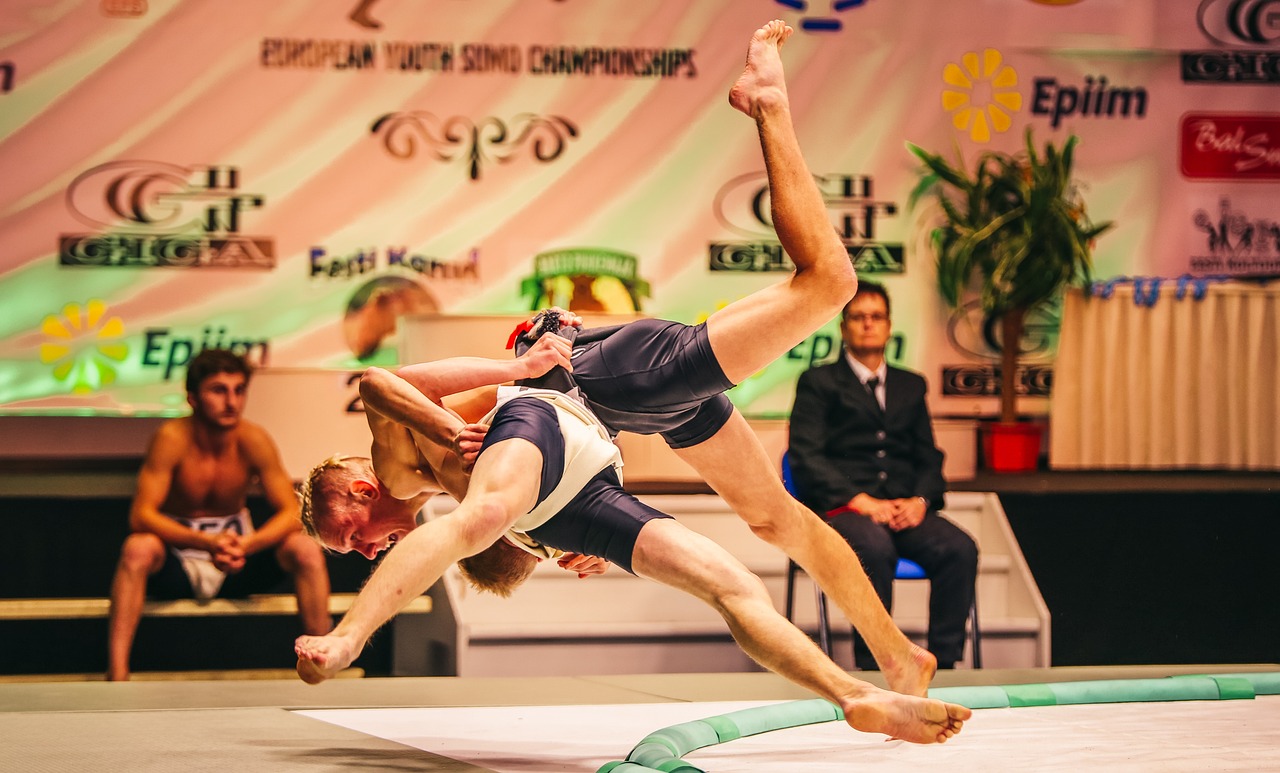
Myth 1: Self-Defense is Only for the Physically Strong
Many people fall into the trap of believing that self-defense is a domain reserved exclusively for those who possess physical strength. This misconception can be disheartening for individuals who may not feel physically capable or strong enough to defend themselves. However, the reality is that effective self-defense is less about brute force and more about strategy, technique, and awareness. Think of it like a chess game; it’s not always the strongest piece that wins, but rather the one that is played most wisely.
Self-defense techniques can be learned by anyone, regardless of their physical attributes. In fact, many self-defense systems emphasize using an opponent's energy against them, which means that a smaller person can successfully defend against a larger attacker by employing the right techniques. The key components of self-defense include:
- Awareness: Being aware of your surroundings can help you avoid dangerous situations before they escalate.
- Technique: Proper techniques can neutralize an attack without needing significant strength.
- Confidence: Self-defense training builds confidence, which can deter potential attackers.
Moreover, the psychological aspect of self-defense cannot be overlooked. When individuals learn self-defense techniques, they gain a sense of empowerment that transcends physical capability. This newfound confidence can alter the way they carry themselves, making them less likely to be targeted by aggressors. It’s akin to walking into a room full of strangers; if you walk in with your head held high and an air of confidence, you’re less likely to be seen as a victim.
It’s important to note that self-defense training is accessible to everyone. Many local community centers and martial arts studios offer classes specifically designed for beginners, focusing on practical techniques that anyone can master. These classes often emphasize the importance of mental readiness, situational awareness, and de-escalation techniques, which are vital for personal safety.
In conclusion, the belief that self-defense is only for the physically strong is a myth that needs debunking. With the right training and mindset, anyone can learn to protect themselves effectively. Remember, self-defense is not merely about physicality; it’s about being smart, aware, and prepared. So, whether you’re a petite individual or someone who may not consider themselves athletic, take heart—self-defense is for you too!
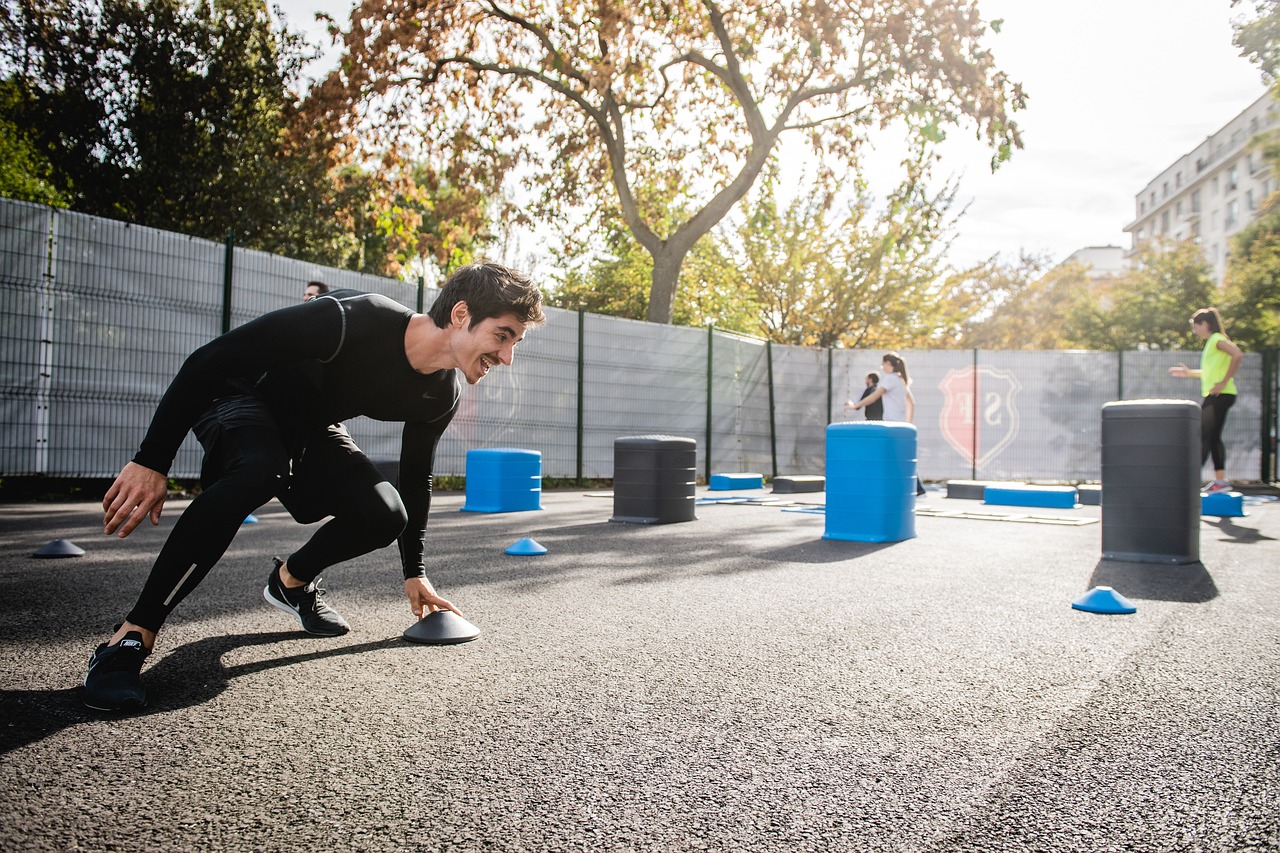
Myth 2: Self-Defense Techniques are Only for Women
One of the most pervasive myths about self-defense is the belief that it is primarily a concern for women. This misconception not only undermines the importance of self-defense for men but also creates a false narrative that can leave many individuals unprepared for potential threats. In reality, self-defense is a vital skill set that everyone, regardless of gender, should consider mastering. Whether you're a man, woman, or non-binary individual, the ability to protect yourself is a universal necessity in today’s world.
When we think about self-defense, it's easy to picture women taking self-defense classes, often in response to societal fears surrounding personal safety. However, this focus on women neglects the fact that men also face threats and situations where self-defense skills could prove invaluable. In fact, statistics reveal that men are often victims of violent crime as well. Thus, the need for self-defense training transcends gender boundaries.
Moreover, self-defense training is not just about physical confrontation; it encompasses a wide range of skills that promote awareness and confidence. Consider the following points:
- Awareness: Self-defense training teaches individuals to be aware of their surroundings, helping them avoid potentially dangerous situations.
- Confidence: Learning self-defense boosts self-esteem and empowers individuals to handle confrontations more effectively.
- Prevention: Many self-defense techniques emphasize de-escalation and conflict avoidance, skills that are beneficial for everyone.
In addition to these benefits, self-defense courses often cater to various demographics, ensuring that training is accessible and relevant to all. For instance, classes can be tailored to address the unique challenges faced by different groups, such as the elderly, teenagers, or those with disabilities. This inclusivity not only broadens participation but also enriches the learning experience, fostering a community of empowered individuals.
Ultimately, the idea that self-defense is only for women is a limiting belief that can hinder personal safety for everyone. By debunking this myth, we encourage all individuals to take proactive steps towards their safety. Whether you’re a seasoned martial artist or a complete novice, investing time in self-defense training can equip you with the skills needed to navigate an unpredictable world with confidence and resilience.

Understanding the Need for Self-Defense
In today's world, the importance of self-defense cannot be overstated. Personal safety is a universal concern, and understanding the need for self-defense is essential for everyone, regardless of age or gender. Did you know that according to the FBI, a violent crime occurs every 24.6 seconds in the United States? This staggering statistic highlights the reality that we all face potential threats in our daily lives. Therefore, learning self-defense techniques is not just for a specific group of individuals; it is a proactive measure everyone should consider.
Self-defense training equips individuals with the skills necessary to protect themselves in various situations. Whether it's a physical confrontation or a potential threat, having the knowledge to react appropriately can make a significant difference. It's like having an insurance policy for your safety; you hope you never have to use it, but if the situation arises, you'll be glad you prepared. Moreover, self-defense is not merely about physical skills; it's about cultivating a mindset that prioritizes awareness and preparedness.
Statistics show that self-defense training can significantly reduce the likelihood of becoming a victim of crime. According to a study published by the Journal of Interpersonal Violence, individuals who have undergone self-defense training report feeling more confident and less vulnerable in their everyday lives. This newfound confidence can lead to a decrease in anxiety and fear, allowing individuals to navigate their environments with a greater sense of security.
It's also important to recognize that the need for self-defense extends beyond physical confrontations. Situational awareness, which involves being conscious of your surroundings and recognizing potential threats, is a critical component of self-defense. By developing this skill, individuals can often avoid dangerous situations altogether. Think of it as being a detective in your own life, constantly observing and analyzing your environment to stay one step ahead of potential dangers.
In summary, understanding the need for self-defense is about acknowledging the realities of our world and taking proactive steps to ensure personal safety. By engaging in self-defense training, individuals not only learn valuable techniques but also foster a mindset of confidence and awareness that can be life-changing. Remember, self-defense is not just about fighting; it’s about empowering yourself to handle any situation with poise and assurance.
- What is self-defense? Self-defense refers to the techniques and strategies used to protect oneself from physical harm.
- Is self-defense training effective? Yes, self-defense training can be highly effective in equipping individuals with the skills to respond to threats.
- Do I need to be physically fit to learn self-defense? No, self-defense techniques can be adapted for individuals of all fitness levels.
- Can self-defense training help with confidence? Absolutely! Many individuals report increased confidence after participating in self-defense training.
- Is it necessary to train with a professional instructor? Yes, professional instructors provide essential guidance and ensure safety while learning techniques.
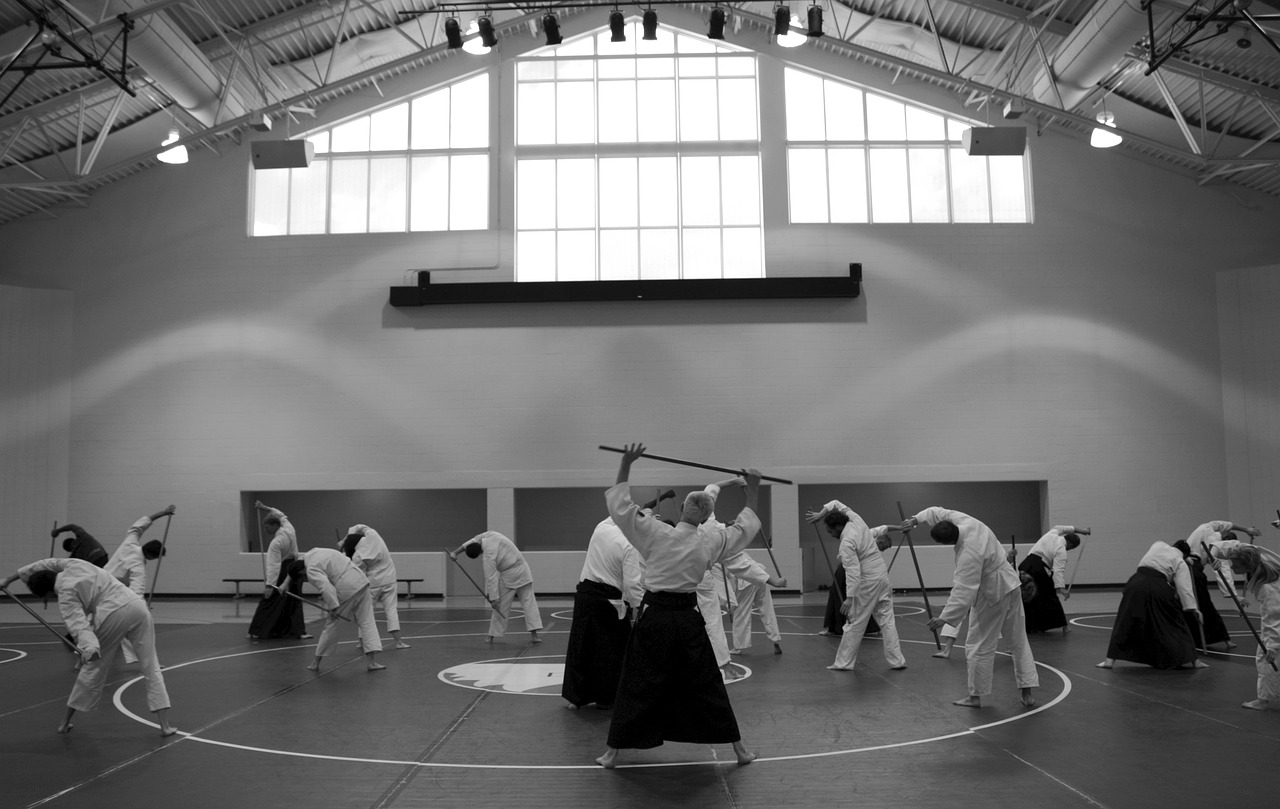
Self-Defense Across Different Demographics
Self-defense is a universal necessity, transcending age, gender, and physical ability. It's crucial to recognize that the need for self-defense training is not limited to a specific group; rather, it is a valuable skill set that everyone should consider acquiring. Whether you are a young student navigating school hallways, a professional commuting to work, or a senior citizen enjoying a leisurely stroll, understanding self-defense can significantly enhance your safety and confidence.
For instance, teenagers often face unique challenges, such as bullying or peer pressure, making self-defense training particularly relevant. Teaching them practical techniques can empower them to stand up for themselves and avoid potentially dangerous situations. Similarly, women often seek self-defense training to feel more secure in their daily lives. However, men can also benefit from these skills, as personal safety is a concern for everyone, irrespective of gender.
Moreover, self-defense techniques can be tailored to accommodate various physical abilities. For individuals with disabilities, adaptive self-defense training can provide essential skills while considering their specific needs. This inclusivity ensures that everyone, regardless of their physical condition, can learn effective strategies to protect themselves.
In addition, cultural backgrounds can influence the perception and approach to self-defense. Some communities may have different views on conflict resolution and personal safety, which can shape how self-defense is taught and understood. Acknowledging these differences is vital for creating a training program that resonates with diverse groups. For example, a class designed for a multicultural audience might incorporate various techniques and philosophies from different martial arts, fostering a richer learning environment.
To further illustrate the importance of self-defense across different demographics, consider the following table that summarizes key considerations for various groups:
| Demographic | Key Considerations | Recommended Techniques |
|---|---|---|
| Teens | Bullying, peer pressure | Verbal de-escalation, escape techniques |
| Women | Personal safety, confidence | Awareness training, striking techniques |
| Men | Self-defense in various situations | Physical confrontation, situational awareness |
| Seniors | Mobility issues, awareness | Adaptive techniques, avoidance strategies |
| Individuals with Disabilities | Adaptive needs | Modified techniques, verbal skills |
In conclusion, self-defense training should be viewed as an essential life skill for everyone, regardless of their background or circumstances. By tailoring training to meet the unique needs of different demographics, we can ensure that everyone has the opportunity to learn how to protect themselves effectively. This empowerment not only boosts confidence but also cultivates a sense of community and support among individuals who share similar goals of safety and resilience.
- What age is appropriate to start self-defense training? Many programs cater to children as young as five, while others are designed for teens and adults. It's essential to choose a program that matches the individual's maturity and physical ability.
- Do I need to be in shape to learn self-defense? No, self-defense can be adapted to all fitness levels. The focus is on technique and strategy rather than brute strength.
- How long does it take to become proficient in self-defense? Proficiency varies by individual, but consistent practice over a few months can lead to noticeable improvements in skills and confidence.
- Can self-defense training help with mental health? Absolutely! Many individuals report increased confidence and reduced anxiety after completing self-defense training.

Empowerment Through Self-Defense
Learning self-defense is not just about mastering physical techniques; it’s about empowerment. When individuals engage in self-defense training, they embark on a journey that significantly boosts their confidence and resilience. Imagine walking into a room filled with strangers, and instead of feeling anxious, you stand tall, knowing you have the skills to protect yourself if necessary. This transformation is more than skin deep—it permeates every aspect of life.
Self-defense training teaches individuals to trust their instincts and make quick decisions in high-pressure situations. This newfound self-assurance spills over into everyday life, influencing how one interacts with others, tackles challenges, and approaches personal goals. The psychological benefits of self-defense are profound; it’s not just about the physical ability to defend oneself but also about cultivating a mindset that embraces strength and courage.
Moreover, self-defense training fosters a sense of community among participants. In a self-defense class, you’re surrounded by like-minded individuals who share similar goals. This camaraderie creates a supportive environment where people encourage each other to push beyond their limits. It’s a reminder that you’re not alone in your journey toward safety and empowerment. Together, participants learn to face fears and challenge the misconceptions that often surround self-defense.
As individuals progress in their training, they also learn valuable life skills such as assertiveness and communication. These skills are essential not only in self-defense scenarios but also in daily interactions. Being able to assert oneself confidently can deter potential threats and foster healthier relationships. In essence, self-defense is a holistic approach to personal development that transcends the physical aspect of fighting.
Ultimately, the empowerment gained through self-defense training is a gift that keeps on giving. It equips individuals with tools to navigate life’s challenges, reinforcing the idea that true strength lies in the ability to protect oneself while maintaining a peaceful demeanor. So, whether you’re a seasoned athlete or someone just starting out, remember that engaging in self-defense training is an investment in yourself—one that pays dividends in confidence, resilience, and personal safety.
- What age is appropriate to start self-defense training? Most programs cater to various age groups, so it's never too early or too late to start learning self-defense.
- Do I need to be physically fit to learn self-defense? Not at all! Self-defense techniques can be adapted for all fitness levels, focusing on strategy and technique rather than brute strength.
- How long does it take to become proficient in self-defense? Proficiency varies by individual, but consistent practice over a few months can lead to significant improvements in skills and confidence.
- Can self-defense techniques be effective against larger opponents? Yes! Many self-defense techniques leverage technique and timing, allowing smaller individuals to defend themselves against larger attackers.
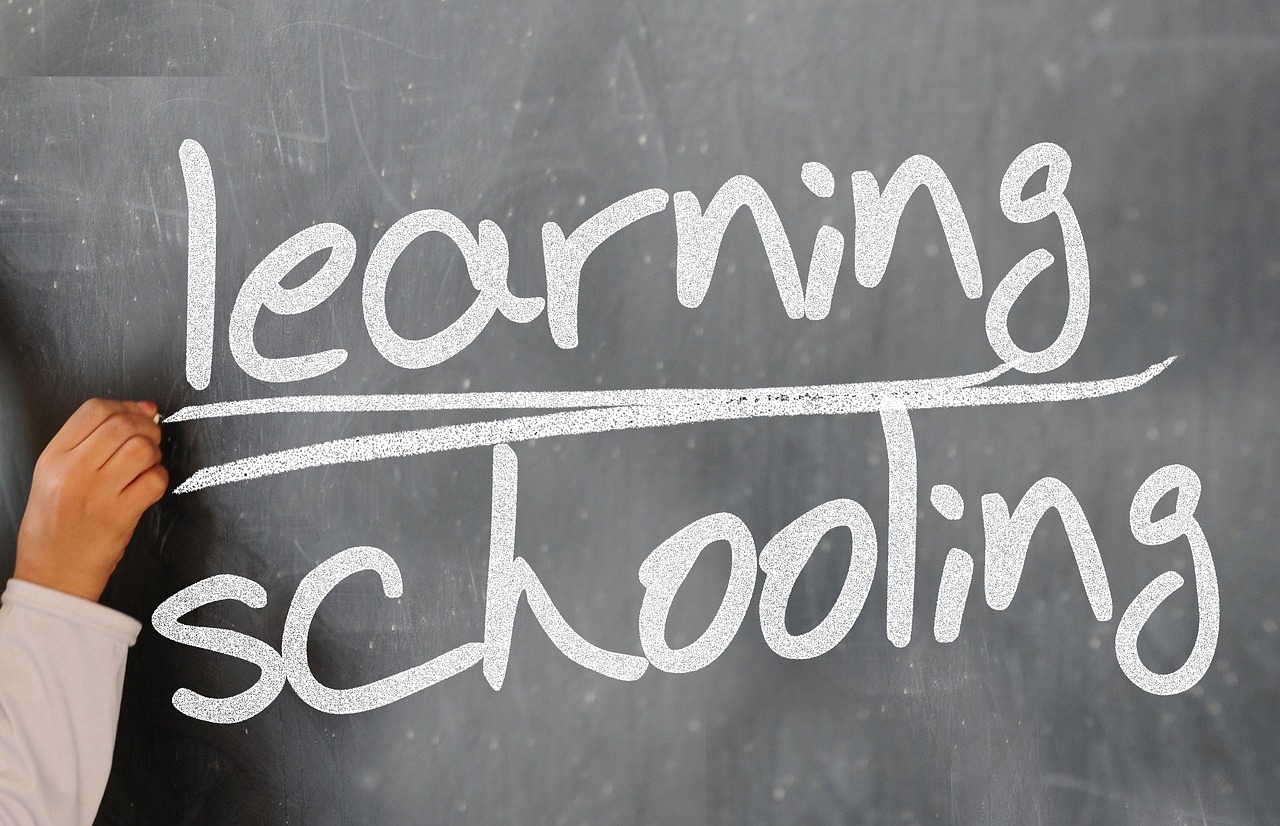
Common Misconceptions About Training
When it comes to self-defense training, many people harbor misconceptions that can deter them from pursuing this valuable skill. One of the most prevalent myths is that self-defense training is overly complicated and requires a significant time commitment. In reality, self-defense can be learned in a variety of formats to suit different schedules and learning styles. For instance, many self-defense classes are designed to be accessible and can be completed in just a few sessions. This means that even those with busy lives can find a way to incorporate self-defense training into their routine.
Another common misconception is that self-defense training is only for those who want to become martial artists or fighters. However, self-defense is about much more than just physical confrontation; it's about developing awareness, confidence, and the ability to react appropriately in potentially dangerous situations. Many self-defense courses focus on practical skills that can be applied in real-life scenarios, emphasizing the importance of avoidance and de-escalation techniques. This means that you don’t have to be a black belt to benefit from training. Instead, you can learn simple yet effective techniques that can help you feel safer and more empowered.
Some individuals also believe that self-defense training is only necessary in high-crime areas. This is a dangerous misconception. The reality is that personal safety is a concern for everyone, regardless of where they live. Situational awareness and self-defense skills can be crucial in any environment, whether you're in a bustling city or a quiet neighborhood. By learning self-defense, you equip yourself with the tools to respond effectively to unexpected situations, enhancing your overall sense of security.
Additionally, many people think that self-defense training is only about physical strength. While being physically fit can be an advantage, the truth is that effective self-defense relies more on technique and mental preparedness than brute force. Training often focuses on leveraging your body’s natural strengths and using your environment to your advantage. For example, techniques like using your voice to assert yourself or employing everyday objects as defensive tools can be incredibly effective, regardless of your physical stature.
Finally, there’s a belief that self-defense training is an all-or-nothing endeavor. Some people feel that if they can’t commit to extensive training, they shouldn’t bother at all. This couldn’t be further from the truth! Even a few hours of training can provide you with essential skills and awareness that can make a significant difference in a threatening situation. The key is to start somewhere, even if it’s just a basic workshop or a few online tutorials, and gradually build your knowledge and confidence.
- Can self-defense training really help in real-life situations? Yes! Many self-defense techniques are designed to be practical and applicable in everyday scenarios.
- Do I need to be in shape to start self-defense training? Absolutely not! Self-defense training can be adapted to fit your fitness level, and it focuses more on technique than strength.
- How long does it take to learn self-defense? The time varies based on the program, but many basic self-defense classes can be completed in just a few sessions.
- Is self-defense training only for women? No! Self-defense is important for everyone, regardless of gender.
- Can I learn self-defense from videos alone? While videos can be helpful, hands-on practice with a qualified instructor is crucial for developing effective skills.

Myth 3: Self-Defense is Only About Fighting
Many people have a common misconception that self-defense is solely about engaging in physical confrontations. This belief can be misleading and may even prevent individuals from understanding the full spectrum of self-defense techniques. In reality, self-defense encompasses a variety of strategies that go beyond just throwing punches or grappling with an attacker. It's crucial to recognize that effective self-defense often starts long before any physical altercation takes place. It involves a combination of awareness, avoidance, and, when necessary, physical response.
To illustrate this point, let's break down the broader scope of self-defense into three key components:
- Avoidance: The first line of defense is often to avoid dangerous situations altogether. This can mean being aware of your surroundings, choosing safe routes, and recognizing potential threats before they escalate. For instance, if you notice a group of individuals acting suspiciously, taking a different path can be a simple yet effective self-defense tactic.
- De-Escalation: If you find yourself in a confrontational situation, the ability to de-escalate can be invaluable. This involves using communication skills to diffuse tension and prevent a situation from turning violent. Techniques such as maintaining a calm demeanor, using non-threatening body language, and employing verbal strategies can often resolve conflicts without physical engagement.
- Situational Awareness: Being situationally aware means understanding your environment and recognizing potential threats. This skill can be developed through practice and mindfulness, allowing individuals to stay alert and responsive to their surroundings. For example, noticing an exit in a crowded area or being aware of who is around you can significantly enhance your personal safety.
These components highlight that self-defense is not just about fighting; it's about using your brain as much as your body. In fact, many self-defense instructors emphasize that the goal is not to win a fight but to avoid one altogether. This mindset can empower individuals to feel more confident and prepared, knowing they have strategies to protect themselves without the need for physical confrontation.
Moreover, it’s essential to understand that physical skills can complement these strategies. While knowing how to defend yourself physically is important, it should be viewed as just one part of a larger toolkit. Training programs often incorporate scenarios that teach participants how to assess situations, recognize threats, and respond appropriately, blending physical techniques with mental preparedness.
In conclusion, self-defense is a multifaceted discipline that goes far beyond the notion of fighting. It’s about being proactive, aware, and capable of handling various situations with confidence. By debunking the myth that self-defense is only about physical confrontations, we can encourage more people to engage in self-defense training, empowering them to take control of their personal safety.

De-Escalation Techniques
When it comes to self-defense, many people jump straight to the notion of physical confrontation. However, the truth is that effective self-defense often begins long before any physical altercation occurs. are essential tools that can help diffuse potentially dangerous situations without resorting to violence. Imagine walking into a heated argument between two individuals. Instead of throwing yourself into the fray, you can apply de-escalation strategies to calm the situation down, much like a firefighter dousing flames before they spread.
One of the most crucial aspects of de-escalation is effective communication. This involves not only what you say but how you say it. Using a calm and steady voice can often help to soothe heightened emotions. For instance, instead of shouting or using aggressive language, try to speak in a low, measured tone. Additionally, maintaining an open body posture can signal that you are not a threat. It’s about creating an environment where both parties feel heard and respected. Here are some key techniques to consider:
- Active Listening: Show genuine concern by listening to the other person's perspective. Sometimes, just feeling heard can significantly reduce tension.
- Empathy: Express understanding of the other person's feelings. A simple acknowledgment can go a long way in calming them down.
- Non-Threatening Body Language: Keep your hands visible and avoid crossing your arms. This helps convey that you are not a threat.
- Finding Common Ground: Identify shared interests or goals to help shift the focus away from conflict.
Another vital component of de-escalation is situational awareness. Being aware of your surroundings allows you to anticipate potential conflicts before they escalate. For example, if you notice a group of people becoming increasingly agitated, you might choose to remove yourself from the situation or intervene calmly before it gets out of hand. It's similar to a chess game; the more you understand the board, the better your moves will be.
In conclusion, mastering de-escalation techniques is an invaluable aspect of self-defense. By focusing on communication and awareness, you can often prevent situations from escalating into violence. Remember, the goal is not to control the other person but to create a safe environment for everyone involved. With practice, these techniques can become second nature, empowering you to handle conflicts with confidence and poise.
Q: What is the primary goal of de-escalation techniques?
A: The primary goal of de-escalation techniques is to reduce tension and prevent a situation from escalating into violence. This involves effective communication, empathy, and situational awareness.
Q: Can anyone learn de-escalation techniques?
A: Absolutely! De-escalation techniques can be learned and practiced by anyone, regardless of their background or experience in self-defense.
Q: How can I practice these techniques effectively?
A: You can practice de-escalation techniques through role-playing scenarios, attending workshops, or even by observing interactions in everyday life. The more you practice, the more natural it will become.

Situational Awareness
Situational awareness is a crucial component of self-defense that often gets overlooked. It's not just about knowing how to throw a punch or execute a perfect kick; it's about being aware of your surroundings and understanding the dynamics of your environment. Imagine walking down a busy street, your mind occupied with your phone or the latest podcast. You're blissfully unaware of the people around you or the potential threats lurking in the shadows. This lack of awareness can make you an easy target. But what if you could train your mind to be more alert?
Enhancing your situational awareness involves a few key strategies that can significantly improve your safety. First, practice mindfulness. This means being present in the moment and paying attention to your surroundings. You can start by observing the details: the layout of the area, the behavior of people around you, and any potential escape routes. Ask yourself questions like:
- Who is around me?
- What are they doing?
- Do I notice anything unusual?
By actively engaging with your environment, you can pick up on subtle cues that might indicate danger. For instance, if someone seems to be watching you too closely or if a group of individuals is acting suspiciously, your heightened awareness can help you decide whether to change your route or seek help.
Another aspect of situational awareness is understanding the concept of the “fight or flight” response. When faced with a potential threat, your body will instinctively react in one of these two ways. Being aware of how your body reacts to stress can help you manage your response better. Instead of freezing in fear, you can choose to either confront the situation or escape it. This is where training comes into play; practicing scenarios can prepare your mind and body for real-life situations.
Moreover, situational awareness is not just about being observant; it’s also about being proactive. This means anticipating potential problems before they arise. For example, if you’re walking in an unfamiliar area, it’s wise to avoid distractions like texting or listening to loud music. Instead, keep your head up, make eye contact with those around you, and trust your instincts. If something feels off, it probably is. Remember, it’s better to be safe than sorry!
In conclusion, situational awareness is an essential skill that can significantly enhance your personal safety. By training your mind to be more alert and proactive, you can reduce your vulnerability to potential threats. It’s not just about having the physical skills to defend yourself; it’s about being aware enough to avoid dangerous situations in the first place.
- What is situational awareness?
Situational awareness is the ability to identify, process, and comprehend critical elements of information about what is happening around you. It helps you recognize potential threats and make informed decisions. - How can I improve my situational awareness?
You can improve your situational awareness by practicing mindfulness, observing your surroundings, and being proactive in recognizing potential threats. Regular training and drills can also help. - Is situational awareness only important for self-defense?
No, situational awareness is beneficial in many aspects of life. It can improve your decision-making skills, enhance your ability to navigate social situations, and increase your overall safety. - Can I learn situational awareness through online courses?
While online courses can provide valuable information, hands-on training and real-life practice are essential for developing effective situational awareness.

Myth 4: Self-Defense Techniques are Ineffective
One of the most pervasive myths surrounding self-defense is the belief that self-defense techniques are ineffective in real-life situations. This notion stems from a misunderstanding of what self-defense truly encompasses. In reality, self-defense is not just about flashy moves or brute strength; it's about awareness, strategy, and the ability to react appropriately when faced with a threat. Effective self-defense techniques can provide individuals with the tools they need to protect themselves in various scenarios.
To debunk this myth, it is essential to highlight that self-defense techniques are designed to be practical and applicable. For instance, techniques like joint locks, pressure points, and escape maneuvers are not just theoretical—they have been tested and proven effective in real-world situations. When taught by qualified instructors, these techniques can be adapted to fit the unique circumstances of each encounter. Moreover, the psychological aspect of self-defense cannot be overlooked. Knowing how to defend oneself can significantly boost confidence, which can deter potential attackers.
Evidence of the effectiveness of self-defense techniques can be found in real-life success stories. Take, for example, the case of a young woman who, after completing a self-defense course, was able to escape an attempted abduction by utilizing a simple escape maneuver she learned during training. This incident not only highlights the practical application of self-defense techniques but also underscores the importance of being prepared. Training for real-world scenarios allows individuals to practice techniques in a controlled environment, making it easier to recall and execute them under pressure.
Furthermore, the effectiveness of self-defense techniques is supported by statistics. According to a study by the National Institute of Justice, individuals who have undergone self-defense training are significantly more likely to successfully fend off an attacker compared to those who have not received any training. This data reinforces the idea that self-defense techniques are not only practical but can also have a profound impact on personal safety.
In summary, the myth that self-defense techniques are ineffective is not only misleading but potentially dangerous. By understanding the practical applications and benefits of self-defense training, individuals can empower themselves to respond effectively in threatening situations. Remember, self-defense is not just about fighting; it’s about being prepared, aware, and confident in your ability to protect yourself.
- Can self-defense techniques really work for anyone? Yes! Self-defense techniques are designed to be accessible to people of all physical abilities and sizes.
- Do I need to be physically fit to learn self-defense? Not at all. Self-defense focuses more on technique and strategy than on physical strength.
- How long does it take to learn effective self-defense? While the basics can be learned in a few classes, ongoing practice is essential for skill retention and confidence.
- Is self-defense training only for women? No, self-defense is important for everyone, regardless of gender. Everyone can benefit from knowing how to protect themselves.
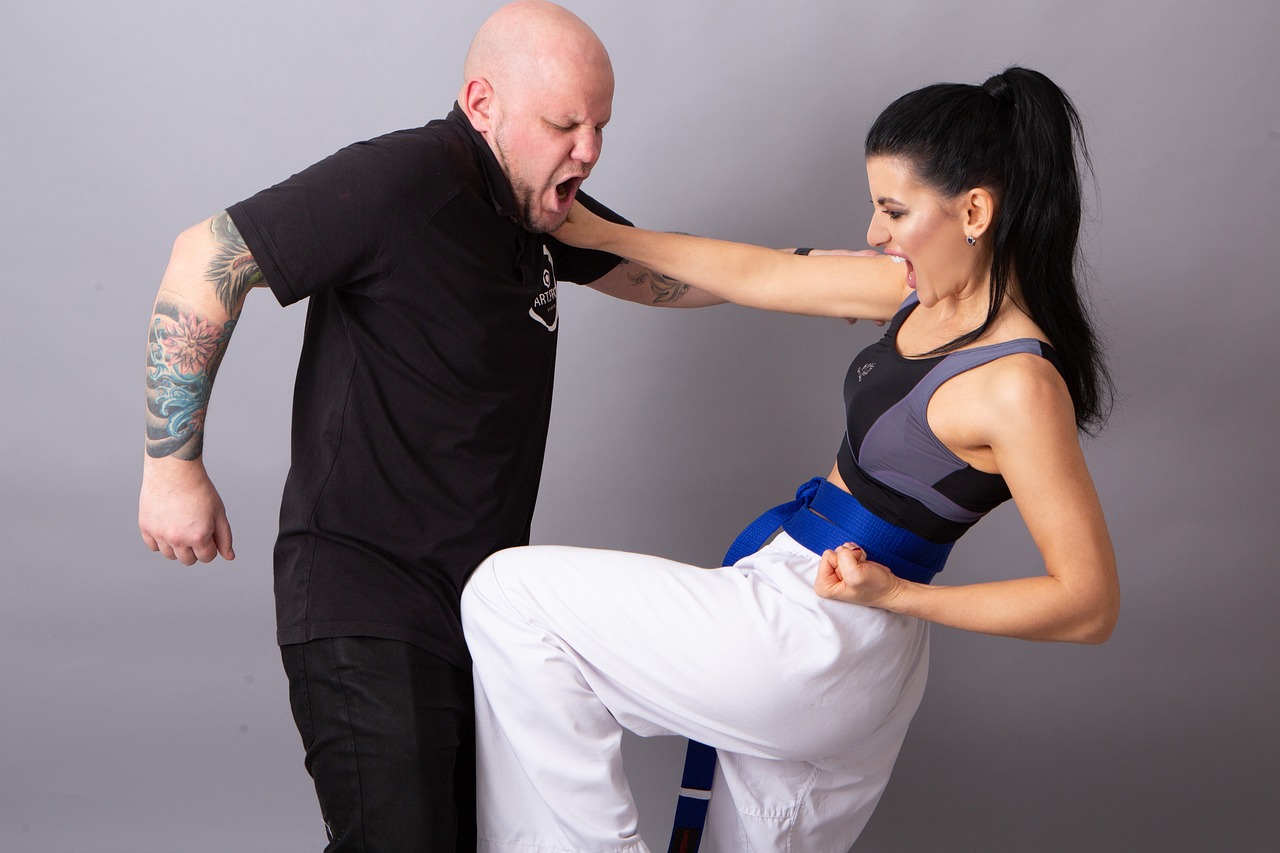
Real-Life Success Stories
When it comes to self-defense, nothing resonates more than that highlight the practical application of techniques learned in training. These stories serve as powerful reminders that self-defense isn't just a theoretical concept; it can be an essential skill that saves lives. Take, for instance, the story of a college student named Sarah. One evening, while walking home from a late study session, she noticed a man following her. Instead of panicking, Sarah recalled the de-escalation techniques she had practiced in her self-defense class. She maintained her composure, made eye contact with the man, and confidently asked if he needed help. This simple act of communication threw him off guard, and he ultimately chose to walk away. Sarah's story emphasizes that self-defense is not only about physical confrontation but also about using one's awareness and communication skills to defuse potentially dangerous situations.
Another inspiring example comes from a young professional named Mark, who found himself in a sticky situation while traveling abroad. During a sightseeing trip, he was approached by a group of aggressive individuals demanding his belongings. Drawing on his self-defense training, Mark remembered the importance of situational awareness. Instead of panicking, he quickly assessed his surroundings and noticed a nearby group of tourists. He shouted for help, drawing attention to the situation. The aggressors, realizing they were being observed, decided to flee. Mark's ability to stay calm and utilize his training not only saved his possessions but also showcased the effectiveness of self-defense techniques in real-world scenarios.
These stories are just a glimpse into the life-saving potential of self-defense training. They remind us that preparedness and confidence can make all the difference when faced with unexpected challenges. Whether it’s using verbal de-escalation, maintaining awareness of one’s surroundings, or simply knowing how to react in a crisis, these skills empower individuals to take control of their safety. It's crucial to understand that self-defense training is not merely about learning how to fight; it's about equipping oneself with a toolkit for navigating potentially dangerous situations.
In summary, real-life success stories like those of Sarah and Mark illustrate the profound impact of self-defense training. They demonstrate that, with the right knowledge and practice, anyone can effectively respond to threats and enhance their personal safety. These narratives inspire others to consider self-defense training, not just as a precaution but as a vital life skill that can lead to greater confidence and security in everyday life.
- What is self-defense? Self-defense refers to the techniques and strategies used to protect oneself from physical harm. It encompasses both physical techniques and mental preparedness.
- Can anyone learn self-defense? Absolutely! Self-defense techniques can be adapted for all skill levels, ages, and genders, making it accessible to everyone.
- How long does it take to learn self-defense? The time it takes to learn self-defense varies by individual, but many find that even a few classes can equip them with valuable skills and confidence.
- Is self-defense only about physical fighting? No, self-defense includes avoidance, de-escalation, and situational awareness, which are often more effective than physical confrontation.
- Do I need to be physically fit to learn self-defense? No, self-defense techniques focus more on strategy and technique rather than brute strength, making it accessible to everyone.

Training for Real-World Scenarios
When it comes to self-defense, the phrase "practice makes perfect" couldn't be more accurate. Training for real-world scenarios is all about preparing individuals to respond effectively when faced with unexpected situations. Unlike the movies, where heroes seem to have endless time to react, real-life situations often unfold rapidly, leaving little room for hesitation. This is why hands-on training is essential. It’s not just about learning techniques; it’s about developing muscle memory, situational awareness, and the ability to think clearly under pressure.
Effective self-defense training incorporates a variety of scenarios that one might encounter in everyday life. For instance, practitioners might engage in role-playing exercises that simulate different attack situations, such as being approached by an aggressive stranger in a parking lot or dealing with a potential mugger on the street. Through these simulations, individuals can practice their responses in a controlled environment, which can significantly boost their confidence when facing real threats.
Moreover, training should also focus on the psychological aspects of self-defense. Understanding how to manage fear and anxiety during a confrontation is just as important as physical skills. Instructors often emphasize the importance of maintaining a calm demeanor and thinking strategically, which can make all the difference in a high-stress situation. By practicing these skills, individuals learn not just to react, but to assess their environment, evaluate their options, and make informed decisions.
In addition to physical techniques and mental preparedness, training for real-world scenarios can also involve learning about legal implications. Knowing the laws surrounding self-defense can empower individuals to act confidently and responsibly. After all, the goal is to protect oneself, but it's equally important to understand the legal boundaries of that protection. This knowledge can prevent unnecessary legal complications after an incident.
Ultimately, the goal of training for real-world scenarios is to create a well-rounded, prepared individual who can handle various situations with poise and effectiveness. It’s about transforming knowledge into action, ensuring that when faced with danger, one is not just a passive observer but an active participant in their own safety.
- What is the best way to start self-defense training? It's advisable to find a local self-defense class or workshop that focuses on practical techniques and real-world scenarios.
- How long does it take to become proficient in self-defense? Proficiency varies by individual, but consistent practice over several months can lead to significant improvement.
- Can self-defense training help with confidence? Absolutely! Many individuals report increased confidence and a sense of empowerment after completing self-defense training.
- Are self-defense techniques effective against larger attackers? Yes, many self-defense techniques focus on leverage and technique rather than brute strength, making them effective regardless of size.

Myth 5: You Can Learn Self-Defense from Videos Alone
In today's digital age, it's easy to fall into the trap of believing that you can master self-defense techniques just by watching videos online. While platforms like YouTube offer a plethora of tutorials and demonstrations, the reality is that effective self-defense training requires much more than passive observation. Think of it like trying to learn to ride a bike by only watching someone else do it; you can gather some tips, but until you actually hop on that bike and feel the balance, you won't truly understand how to ride.
Self-defense is a physical skill that demands practice, feedback, and correction. Videos can provide a basic understanding of techniques, but they lack the critical element of hands-on training. When you engage in self-defense classes, you have the opportunity to:
- Receive Immediate Feedback: Professional instructors can correct your form and technique in real-time, ensuring that you’re not developing bad habits.
- Practice with a Partner: Many self-defense techniques require interaction and timing with another person, which is something you simply can't replicate through a screen.
- Build Muscle Memory: Repeated practice under the guidance of an experienced instructor helps to engrain techniques into your muscle memory, making them instinctual during high-stress situations.
Moreover, self-defense training is not just about learning how to throw punches or escape holds; it’s about understanding the dynamics of a confrontation and developing the confidence to handle potentially dangerous situations. In a classroom setting, you can engage in scenario-based training that mimics real-life situations, allowing you to practice your responses in a safe environment. This is something that simply cannot be achieved through video tutorials.
Additionally, the role of professional instructors cannot be overstated. They bring a wealth of knowledge and experience that enriches the learning process. Instructors can teach you the nuances of self-defense that videos may gloss over, such as:
| Aspect | Video Learning | Instructor-Led Training |
|---|---|---|
| Technique Correction | Limited | Immediate Feedback |
| Partner Interaction | None | Essential for Skill Development |
| Scenario Training | Not Applicable | Realistic Practice |
| Motivation | Self-Driven | Group Dynamics |
In conclusion, while online videos can be a great supplementary resource for learning self-defense, they should never be your sole source of training. To truly equip yourself with the skills and confidence needed to protect yourself, seek out professional instruction and engage in hands-on practice. Remember, self-defense is as much about mental preparedness as it is about physical technique, and nothing beats the experience of real, interactive training.
- Can I learn self-defense effectively from online videos? While videos can provide useful information, they lack the interactive element necessary for mastering self-defense techniques.
- How often should I train in self-defense? Regular practice is key; consider attending classes at least once a week to build and maintain your skills.
- Are self-defense classes suitable for all ages? Yes! Self-defense training can be adapted for individuals of all ages and fitness levels.

The Role of Professional Instructors
When it comes to mastering self-defense techniques, the importance of professional instructors cannot be overstated. These trained experts bring a wealth of knowledge and experience to the table, guiding students through the intricacies of self-defense. Unlike watching videos or reading books, hands-on training with a professional allows individuals to practice techniques in a supportive environment, ensuring they learn the correct methods and develop muscle memory.
Professional instructors not only teach the physical aspects of self-defense but also emphasize safety and confidence. They create a structured learning environment where students can ask questions, make mistakes, and learn from them without the fear of judgment. This supportive atmosphere is crucial, especially for beginners who may feel intimidated by the idea of self-defense training. Instructors often tailor their lessons to meet the unique needs of each student, ensuring that everyone, regardless of their physical ability or prior experience, can benefit from the training.
Moreover, professional instructors are adept at providing immediate feedback, which is essential for mastering techniques. They can identify mistakes in form or execution that a student might not notice on their own. This real-time correction helps to prevent the development of bad habits that could hinder a student's progress in the future. Additionally, instructors often incorporate scenario-based training, which allows students to practice their skills in situations that mimic real-life threats. This practical approach not only enhances skill retention but also builds the confidence needed to respond effectively in a crisis.
Here are some key benefits of learning from professional instructors:
- Expert Guidance: Instructors have extensive knowledge of various self-defense techniques and can provide insights that are not available through self-study.
- Personalized Training: Professional instructors can tailor their teaching methods to suit the individual learning styles and needs of their students.
- Safety Awareness: They emphasize the importance of safety, teaching students how to protect themselves without escalating a situation.
- Motivation and Accountability: Regular classes with an instructor create a sense of commitment, helping students stay motivated and accountable for their progress.
In conclusion, the role of professional instructors in self-defense training is invaluable. They not only impart essential skills but also foster an environment of growth, safety, and empowerment. By learning from qualified professionals, individuals can develop the confidence and ability to defend themselves effectively, turning fear into strength.
Q: Do I need to be in shape to start self-defense training?
A: No! Self-defense training is designed for people of all fitness levels. Instructors will work with you to develop your skills at your own pace.
Q: How long does it take to learn self-defense?
A: The time it takes to learn self-defense varies by individual. However, many students see significant improvement in just a few weeks of consistent training.
Q: Is self-defense training only for women?
A: Absolutely not! Self-defense training is beneficial for everyone, regardless of gender. It enhances personal safety and boosts confidence for all individuals.
Q: Can I learn self-defense effectively through online videos?
A: While online resources can supplement your learning, effective self-defense requires hands-on practice and guidance from a professional instructor.
Q: What should I wear to self-defense classes?
A: Comfortable clothing that allows for movement is ideal. Many classes recommend wearing athletic gear and supportive footwear.

Benefits of Group Training
When it comes to learning self-defense, training in a group setting offers a myriad of advantages that can significantly enhance the experience. One of the most compelling benefits is the motivation that comes from being part of a team. Imagine stepping into a dojo or training facility, surrounded by fellow learners who share the same goal of mastering self-defense techniques. This camaraderie creates an environment where everyone encourages each other to push their limits, making the process not only effective but also enjoyable.
Moreover, group training fosters a sense of community. Participants often form bonds that extend beyond the training sessions, creating a support network that can be invaluable. This community aspect can lead to lasting friendships and a shared commitment to personal safety. When you know that your training partners are there for you, it instills a sense of accountability and belonging that can enhance your dedication to learning.
Another significant advantage of group training is the opportunity to practice with a variety of partners. Each person brings different skills, sizes, and styles to the mat, which allows learners to experience a range of scenarios and responses. This diversity is crucial because self-defense situations can vary widely. Training with multiple partners helps individuals adapt to different techniques and understand how to apply their skills in real-life situations. Additionally, practicing with others can help identify personal weaknesses and areas for improvement, which is essential for growth.
Group training also provides an element of safety during practice. When learning self-defense, it’s important to apply techniques correctly to avoid injury. In a group setting, instructors can monitor participants more effectively, ensuring that everyone is practicing safely and correctly. This oversight not only boosts confidence but also minimizes the risk of accidents that can occur when training alone.
Furthermore, training in a group can make learning self-defense techniques more accessible. Many self-defense classes are designed to cater to various skill levels, allowing beginners and advanced practitioners to learn together. This inclusivity fosters an environment where everyone can learn at their own pace while still receiving guidance from instructors and support from peers. The collaborative atmosphere encourages questions and discussions, enhancing the overall learning experience.
Finally, let's not forget the fun factor! Group training sessions often incorporate games and drills that make the learning process engaging and dynamic. This approach not only helps participants retain information better but also makes the experience memorable. When individuals enjoy their training, they are more likely to stick with it, leading to greater proficiency in self-defense techniques over time.
Q: Can anyone join a group self-defense class?
A: Yes! Group self-defense classes are typically open to individuals of all ages and skill levels. Whether you're a beginner or have some experience, there's a place for you.
Q: What should I wear to a group training session?
A: It's best to wear comfortable, athletic clothing that allows for a full range of motion. Closed-toe shoes or martial arts footwear are also recommended.
Q: How often should I attend group training sessions?
A: Ideally, attending classes 1-3 times a week can help reinforce your skills and build muscle memory. However, it's essential to find a schedule that works for you.
Q: Will I learn how to defend myself in real-life situations?
A: Yes! Group training focuses on practical techniques that can be applied in real-life scenarios, enhancing your confidence and preparedness.
Frequently Asked Questions
- What is the most important aspect of self-defense?
The most important aspect of self-defense is awareness. Being aware of your surroundings can help you avoid dangerous situations before they escalate. It's not just about physical techniques; understanding how to recognize potential threats is crucial for personal safety.
- Can anyone learn self-defense, regardless of physical ability?
Absolutely! Self-defense techniques are designed to be effective for individuals of all physical abilities. The key lies in strategy and technique rather than brute strength. With the right training, anyone can learn to protect themselves.
- Are self-defense classes only for women?
No way! Self-defense is for everyone, regardless of gender. Both men and women can benefit from learning self-defense techniques to enhance their personal safety and confidence. It's all about being prepared and empowered.
- Is self-defense only about fighting?
Not at all! While physical techniques are a part of self-defense, the broader scope includes avoidance, de-escalation, and situational awareness. Effective self-defense often means knowing how to defuse a situation before it turns physical.
- Can I learn self-defense effectively through online videos?
While online resources can be helpful for learning theory, effective self-defense training requires hands-on practice and guidance from a professional instructor. Real-life practice is essential to develop the skills needed to respond effectively in a threatening situation.
- How can I find a good self-defense class?
Look for classes taught by certified instructors who focus on practical techniques and real-world scenarios. Reading reviews, asking for recommendations, and observing a class can help you find a program that fits your needs and comfort level.
- What are the psychological benefits of learning self-defense?
Learning self-defense can significantly boost your confidence and resilience. It empowers you to feel more secure in your surroundings, reduces anxiety about potential threats, and fosters a sense of control over your personal safety.



















